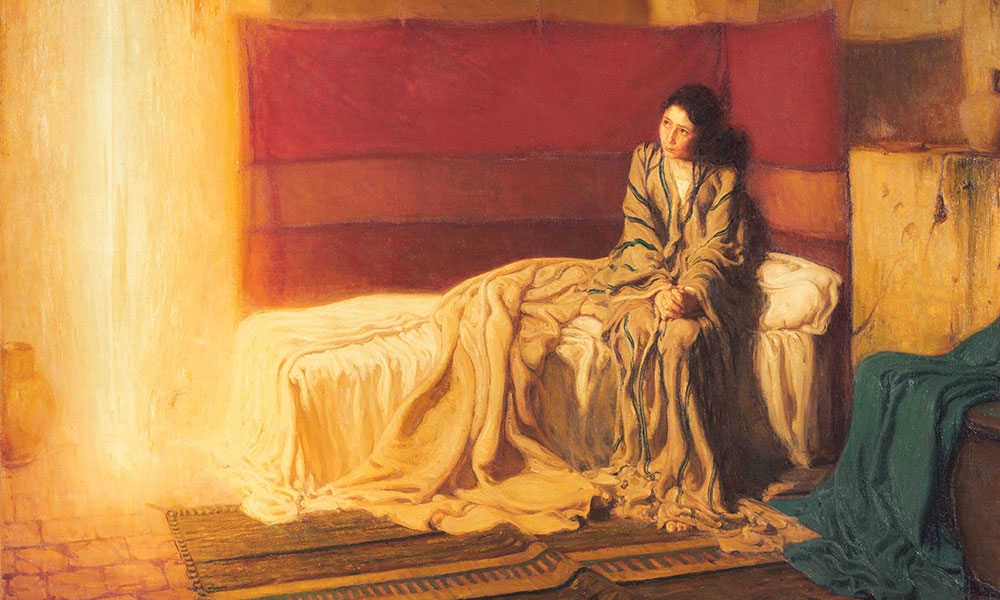
Pilgrimages, art museums and staycations
For quite a few years, I lived and taught just outside Philadelphia. I have immediate family living in the suburbs, I spent six summers at St. Charles Borromeo Seminary and I was often the chauffeur to a few Philly-born sisters who needed a ride home for a short visit. That afforded me the opportunity to make a few memorable pilgrimages — notably to the Redemptorist shrine dedicated to St. John Neumann and to what was then the motherhouse of the Sisters of the Blessed Sacrament. It’s where the grave of St. Katharine Drexel and many of her personal belongings and memorabilia were on display.
For quite a few years, I lived and taught just outside Philadelphia. I have immediate family living in the suburbs, I spent six summers at St. Charles Borromeo Seminary and I was often the chauffeur to a few Philly-born sisters who needed a ride home for a short visit. That afforded me the opportunity to make a few memorable pilgrimages — notably to the Redemptorist shrine dedicated to St. John Neumann and to what was then the motherhouse of the Sisters of the Blessed Sacrament. It’s where the grave of St. Katharine Drexel and many of her personal belongings and memorabilia were on display.
There is another site, though, to which I have gone on pilgrimage more times than I can count: the Philadelphia Museum of Art. I have long found this museum to be my favorite American pilgrimage spot because of two features.
First is the painting found in the 19th century American area, Henry Ossawa Tanner’s Annunciation. Tanner’s rendering of the Blessed Virgin’s encounter with Gabriel is unlike any other. The painting is filled with light and brown tones. The tans and beiges suggest the dry climate of Nazareth as well as the barrenness of much of the Holy Land. Mary is dressed in homespun and looks like a young teenage girl who has been taken by surprise. She appears simultaneously tentative, interested, humble. The surroundings are undecorated, as simple as a Native American pueblo.
The second feature that I have repeatedly strolled through slowly and reflectively is the medieval wing. Stained glass, illuminated scriptural manuscripts, a reconstructed monastery garden and wood carvings of saints and Jesus chained and beaten (depicted as he might have been in the ecce homo/behold the man scene of his passion) are all on display. This area precedes galleries displaying Islamic and Hindu art, Chinese furnishings, a rendering of a Confucian scholar’s study, statues of the Buddha and a Japanese tea garden displaying a scroll with the contemplative invitation “Look on where you stand.” So the museum stimulates not only the Catholic Christian memory and imagination but also invites a step into the spiritual impulses of people around the globe.
What I have found repeatedly is that no matter how secular the foundation and the patrons of various museums around the country might be, the sheer weight of religious art that occupies museum space is remarkable. The Holy Spirit seems to move profoundly across the centuries as we see the way in which religious themes abound. Artists and art lovers are captivated by Biblical stories, by the lives of prophets, apostles, Jesus, the Blessed Virgin and saints.
The same is clearly true in South Carolina. The Columbia Museum of Art houses paintings and statuary depicting Jacob’s son Joseph, David and Goliath, the Immaculate Conception, Annunciation, Nativity, Madonna and Child, Jesus and the Samaritan woman, Mary Magdalene, St. Nicholas, decorative altar pieces and symbols of the Trinity. There is no dearth of landscapes, modern pieces, depictions of Greek gods and goddesses and Oriental arts and crafts, but the point is that our Judeo-Christian history is the source of so much artistic production. These museums and so many of their displays induce reverence for all that is holy.
One of the startling things about art in South Carolina is that an unparalleled collection of Christian art, Catholic art, is housed at Bob Jones University in Greenville. There are more than 400 pieces of Western religious art and Russian icons. Along with tours during museum hours, you can take panoramic tours of more than 25 galleries online through the university’s site, museumandgallery.org.
So here is a timely suggestion. Instead of going over the river and through the woods or holing up in airport concourses with children and Aunt Elsie on her walker, Thanksgiving and Christmas might be great times to consider contacting relatives online and reserving a time for what we now commonly call a “staycation.” It isn’t too difficult to schedule a pilgrimage and culturally uplifting experience close by. After all, Columbia is a reasonable driving distance from just about anywhere in the state. And, the virtual tour of the museum at Bob Jones is accessible anywhere there’s an internet connection.
The patron saints of visual art are St. Luke, whose feast was Oct. 18, and St. Catherine of Bologna, whose feast is March 9. Both are associated with visual art inspired by our time-honored religious themes. If the choice is a car trip or swallowing escalating air fares, I’m not sure I can name the patron saints whose job it is to prevent impossible traffic jams on I-95. Is there a patron to engineer schedules and weather so there are no flight cancellations or delays? Far better to plan a pilgrimage, and “look on where you stand!”
Sister Pamela Smith, SSCM, Ph.D., is the diocesan director of Ecumenical and Interreligious Affairs. Email her at psmith@charlestondiocese.org.
